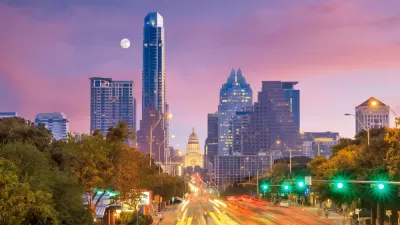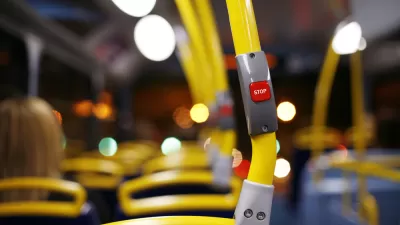An organization successfully balanced the tension between expanding rail line service and improving bus service, and ensuring race was at the forefront of the conversation.

In 2016, an Indianapolis-based faith organization launched a successful campaign to bring more funding to the mass transit system in Marion County. Shelterforce’s Miriam Axel-Lute talks with Nicole Barnes of Faith in Indiana about why the organization focused on transit improvements, how they balanced the tension between expanding rail line service and improving bus service, and how race had to be at the forefront.
Miriam Axel-Lute: Why did IndyCAN (now Faith in Indiana) pick transit improvements as a goal?
Nicole Barnes: Transit was something that we believe was imperative for the work that we do. It aligns with our mission, which is to empower and give diverse communities the opportunity to work together. We want to serve as a catalyst for the marginalized and for faith communities so they can act together for racial and economic equity. Transit absolutely fit in racial and economic equity. When we started digging into the research, we saw how lack of transportation contributed greatly to poverty.
We had this opportunity to get transit on the ballot in 2016. Our leaders and our people [agreed that] this is something that will not just improve the city economically, but will also improve our communities from a racial standpoint [and] from an economic development standpoint. That campaign beautifully embodied our mission, which is to get people from all sides to work together toward something good.
We called this campaign “Ticket to Opportunity.” Even in our choice of what we called it, it [was clear it] wasn’t just about transit, but transit as an opportunity for people to get out of the circumstances that they were in. ...
FULL STORY: The Ticket to Opportunity

Planetizen Federal Action Tracker
A weekly monitor of how Trump’s orders and actions are impacting planners and planning in America.

Chicago’s Ghost Rails
Just beneath the surface of the modern city lie the remnants of its expansive early 20th-century streetcar system.

San Antonio and Austin are Fusing Into one Massive Megaregion
The region spanning the two central Texas cities is growing fast, posing challenges for local infrastructure and water supplies.

Since Zion's Shuttles Went Electric “The Smog is Gone”
Visitors to Zion National Park can enjoy the canyon via the nation’s first fully electric park shuttle system.

Trump Distributing DOT Safety Funds at 1/10 Rate of Biden
Funds for Safe Streets and other transportation safety and equity programs are being held up by administrative reviews and conflicts with the Trump administration’s priorities.

German Cities Subsidize Taxis for Women Amid Wave of Violence
Free or low-cost taxi rides can help women navigate cities more safely, but critics say the programs don't address the root causes of violence against women.
Urban Design for Planners 1: Software Tools
This six-course series explores essential urban design concepts using open source software and equips planners with the tools they need to participate fully in the urban design process.
Planning for Universal Design
Learn the tools for implementing Universal Design in planning regulations.
planning NEXT
Appalachian Highlands Housing Partners
Mpact (founded as Rail~Volution)
City of Camden Redevelopment Agency
City of Astoria
City of Portland
City of Laramie




























